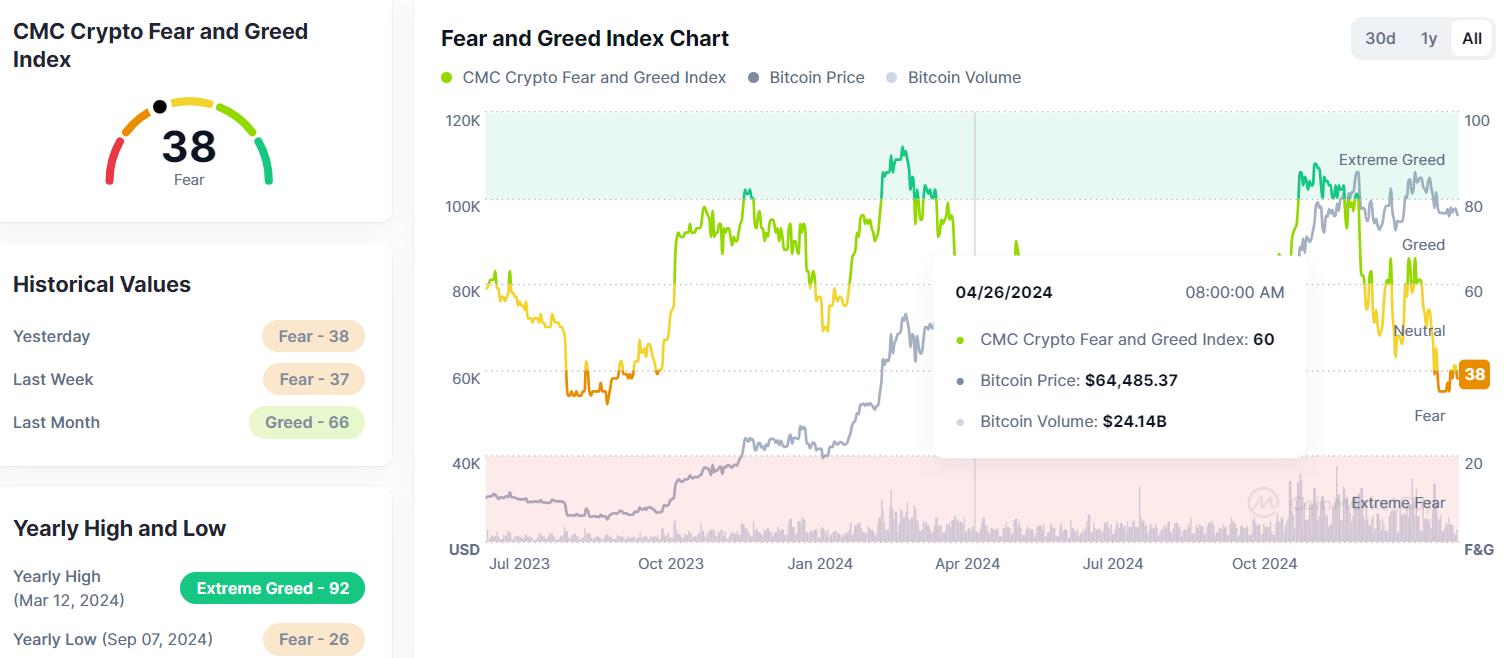On February 15, LIBRA experienced an epic collapse. As the community investigated further, a meme conspiracy group controlled by institutions gradually surfaced, completely subverting the public's original perception of fair meme launches. Previously, the Broccoli project had created an atmosphere of conspiracy, and the trust crisis caused by the insider harvesting of Meme coins has further undermined market confidence. The voice of "everything is a scam" has re-emerged, and the belief in SOL meme has been shaken, and the market has further declined.
Crypto Market Continues Downturn, Meme Narratives Shaken
Since Bitcoin fell from its high point, the entire crypto market has experienced months of continuous downturn and volatile downward movement. With the sharp correction of altcoins, Bitcoin's market capitalization has risen to 60%, showing that Bitcoin's dominance in the market is increasing. In contrast, altcoins in the hands of retail investors face the dual challenges of insufficient liquidity and declining market capitalization, and generally suffer serious blood loss. Data shows that since February, the CMC Fear and Greed Index has fallen below 40, and the market has continued to be in a state of extreme fear.

In the meme market where funds are concentrated, the market is also not optimistic. Since the launch of the TRUMP token and the on-chain fomo market, many celebrity coins and presidential coins have emerged. However, the launch of these tokens did not attract outsiders to bring funds to build the crypto world as people expected, but instead became a tool for conspiracy groups to make money and suck the blood of the market. The meme rotation is shorter, becoming a quick pass of a few hours or even minutes, and the sickle is fast and bright.
Meme is increasingly becoming a conspiracy for institutions to make precise profits, rather than a gold mine for retail investors to change their fate. The market is showing signs of depression. According to Defillama data, pump.fun's protocol fee income on February 17 was US$2.19 million, a decrease of 85.76% from the historical peak (US$15.38 million on January 25).
Macroeconomic factors dominate the crypto market
Previously, the US presidential election dominated the market and helped push Bitcoin to a record high, but as the election narrative gradually landed, the market enthusiasm dissipated. The macro economy took over again and dominated the current crypto market trend.
After Trump announced additional tariffs on Mexico, Canada and China in early February, the crypto market saw an immediate drop in market value by about 13%. Bitcoin itself hit a three-week low of 91K, while Ethereum fell by nearly 30%.
This shows that with the listing of ETFs, the cryptocurrency market has been deeply embedded in the macro market and has become part of the traditional financial sector. Under the threat of a global trade war, the market expects that tariffs will increase the cost of imported goods, which may lead to rising inflation. If inflation remains high, the Federal Reserve may postpone or cancel the expected interest rate cuts, turning down the tap or simply turning it off, which directly determines the liquidity of the financial market.
This also means that with no hope of realizing the positive news of the national reserve of Bitcoin in the short term, everything will be more dependent on the off-market macroeconomic situation in the next period of time, especially the erratic Trump tariff policy.
As the demand for risk aversion increases, prudent financial management becomes a "safe haven" for funds
Against the backdrop of increasing uncertainty, investors have shifted from chasing highly volatile assets to pursuing certain returns, and holding U-funded assets has become the mainstream choice.
Unfortunately, the yields of financial products offered by most platforms seem to be "much ado about nothing". Taking USDT current account as an example, the annualized yield is generally 2%-2.3%, and the annualized yield of fixed-term products is generally maintained at around 3%. Those that claim to have higher yields are often either tiered annualized or only have a subscription quota of 200-500U.
The unsatisfactory returns on financial management have led to the innovation of new financial management models. For example, the 4E platform optimizes the underlying asset allocation to provide more competitive returns while maintaining high liquidity. The annualized return on demand deposits is as high as 3.5%, the annualized return on 30-day deposits is 7%, and the annualized return on 90-day deposits is as high as 8%. There are no limits on the amount and tiers, which is a flexible and affordable choice for investors who are waiting to see the market.
The dark side of Meme is getting deeper and deeper, SOL has plummeted, and the myth of fair launch has been proven to be a carefully designed liquidity trap, which once again proves that the current meme economy is essentially still an on-chain replica of institutional manipulation. The market may have entered a deep adjustment period of disenchantment of the meme narrative.












